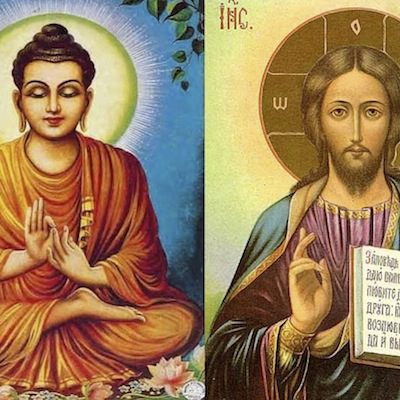I recently posted, once again, Edgar Goodspeed’s expose of a fraudulent account of Jesus visiting Tibet. It generated a little heat, mostly, it would appear, from people who weren’t particularly interested in reading the professor’s examination of a forged text, but who were moderately or strongly exercised at the suggestion at the beginning of the post that Jesus did not spend time in India or Tibet.
One pointed to Marcus Borg’s delightful “Jesus and Buddha: The Parallel Sayings” as if it were proof, not necessarily of Jesus studying in Tibet, but certainly of Buddhist influence on Jesus. Of course the railway theory of religious thought, the assumption if the spiritual teachings of two different religions are similar the later teaching must in fact come from the earlier one is pretty common. But, it often turns out that there is no connection, these things are examples of parallel evolution.
While it is possible that some of the gymnosophists who appear to have made their way to the Roman Empire could have been Buddhist monks, and so it is not outside the realm of possibility there was some Buddhist influence on Jesus, or at least early Christianity, the rather more important point is that Jesus’ teachings were in fact not radical, or rather they may have been radical in the sense they went against the grain of the day then, as now, they were also very much mainstream Jewish teachings. Bottom line there is no need to appeal to influence from elsewhere to come up with Jesus. So, why multiply assumptions?
That said.
Among the things that are fascinating for me, are the actual provable contacts between early Christianity and Buddhism. The connections that have documentary evidence that wasn’t made up.
For those interested in those, I offer two pointers. Each worthy of some study. I believe…
For Christianity infused with Buddhism, the so-called Jesus Sutras may prove utterly fascinating. I know I find them really wonderful.
For Buddhism becoming Christian, how about how the Buddha becomes a Christian saint, actually two?
And if that isn’t enough, at absolutely no extra charge, here’s a pointer to a brief meditation on a mid-twentieth century attempt at creating a Buddhist-esqu Christianity.













